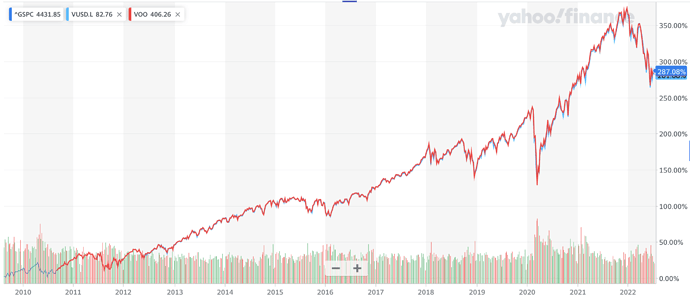That surprises me, because as an investor, fees are basically the only thing that you can control. And a TER advantage of 0.09% is not that small as you have shown yourself.
If you want to do it strictly according to the market state, that should be proportional to the capitalization of underlying indices. Check FTSE index factsheets. Now it is around 90/10, if emerging markets do better than developed it can go to 85/15, if not to 95/5, and so on. And once 2 funds are brought into the market capitalization proportion they will stay like this for quite some time, might be years even, before the proportion is going to drift away because of dividends, index changes etc.
Yes, and for me it was an argument for 2 funds portfolio, as it is actually invested in all securities tracked.
With such an inequal ratio between two subindices, you should really deviate a lot to have a substantially different investment returns. Like 15% or 5% EM instead of 10%.
I think you have “fixed” commission type. With my “tiered” I see lower numbers in “order preview”. And all in all it looks like I guessed before: buy in the currency (USD/CHF/EUR) that you have at hands now.
But I also see your point about a simplicity of buying one fund only. I can suggest a hybrid approach:
- Split your current VWRwhatever holdings into VEVE and VFEM.
- Buy VWRD/L only until you get to 20/30/50/something k,
- then split what you have accumulated.
Or, even better, you can do a “pragmatic” investment in your 2 funds portfolio. When you add money to your portfolio, calculate how much should go into the each fund according to the current market capitalization, but only buy smaller position if the amount to be invested is more than for example 1k. Like this you can avoid small purchases, and the more your portfolio is getting, the less significant is your “tracking error”.
